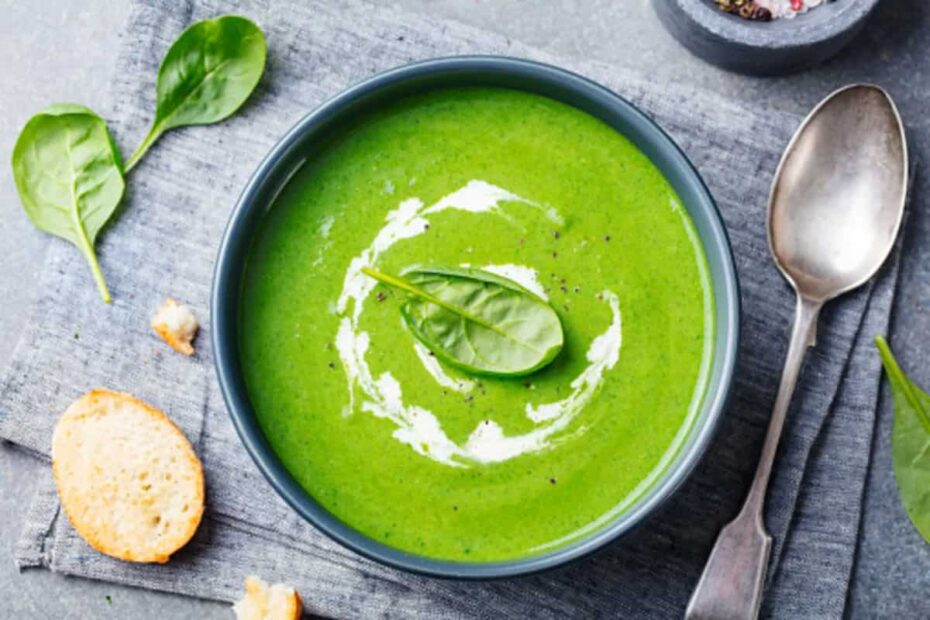Here are three diabetes-friendly alkaline recipes that emphasize low-glycemic, nutrient-dense ingredients to help maintain stable blood sugar levels while promoting an alkaline environment in the body. These recipes focus on vegetables, healthy fats, avoiding high-glycemic grains, refined sugars, and processed foods.
1. Alkaline Zucchini and Kale Soup
Description: A light, nutrient-dense soup featuring vegetables like zucchini and kale, designed to support detoxification and stable blood sugar levels.
Ingredients (Serves 4):
- 2 medium zucchinis, chopped
- 2 cups kale, chopped
- 1 small onion, diced
- 2 tbsp grapeseed oil
- 4 cups spring water
- 1 tsp sea salt
- 1 tsp dried basil
- 1 tsp dried oregano
- 1 tbsp fresh key lime juice
- Optional: 1 cup cooked amaranth for added texture
Instructions:
- Heat grapeseed oil in a large pot over medium heat. Add diced onion and sauté for 3-4 minutes until translucent.
- Add chopped zucchini and cook for 5 minutes, stirring occasionally.
- Pour in spring water and bring to a boil. Reduce heat to a simmer and add kale, sea salt, basil, and oregano.
- Simmer for 10-12 minutes until vegetables are tender.
- Blend the soup using an immersion blender or in batches until smooth.
- Stir in key lime juice for an alkaline boost. If using amaranth, stir in cooked grains and heat through for 2 minutes.
- Serve warm.
Why Diabetes-Friendly? Zucchini and kale are low-glycemic, high-fibre vegetables that help regulate blood sugar. Amaranth, an alkaline grain, adds minimal carbs with high nutritional value.
Nutritional Notes: Rich in fibre, and minerals like magnesium.
2. Quinoa-Stuffed Chayote
Description: A filling dish using chayote stuffed with quinoa and alkaline vegetables, providing low-glycemic carbs.
Ingredients (Serves 4):
- 4 chayotes, halved and seeded
- 1 cup cooked quinoa (rinsed thoroughly before cooking)
- 1 cup diced cucumber
- 1/2 cup diced red bell pepper
- 1/4 cup diced onion
- 2 tbsp grapeseed oil
- 1 tbsp fresh key lime juice
- 1 tsp sea salt
-
1 tsp dried thyme
- Optional: 1 tbsp chopped dandelion greens for extra alkalinity
Instructions:
- Preheat oven to 375°F (190°C).
- Boil chayote halves in spring water for 10 minutes until slightly tender. Drain and set aside.
- In a bowl, mix cooked quinoa, cucumber, red bell pepper, onion, grapeseed oil, key lime juice, sea salt, and thyme.
- Stuff each chayote half with the quinoa mixture.
- Place stuffed chayotes in a baking dish, cover with foil, and bake for 20-25 minutes until chayotes are fully tender.
- Optional: Garnish with chopped dandelion greens before serving.
- Serve warm.
Why Diabetes-Friendly? Chayote and quinoa have low glycemic indices (GI ~50-53), and the fibre-rich vegetables slow carbohydrate absorption, aiding blood sugar control.
Nutritional Notes: Approx. 160 kcal per serving, high in fibre, and potassium.
3. Avocado and Cucumber Salad with Tamarind Dressing
Description: A refreshing salad with ingredients like avocado, cucumber, and amaranth greens, paired with a tangy tamarind dressing to support an alkaline state.
Ingredients (Serves 2):
- 1 large cucumber, thinly sliced
- 1 avocado, diced
- 2 cups amaranth greens
- 1 tbsp raw sesame seeds
- Tamarind Dressing:
- 2 tbsp tamarind paste (from fresh tamarind, no additives)
- 1 tbsp grapeseed oil
- 1 tbsp fresh key lime juice
- 1 tsp agave syrup
- Pinch of sea salt
Instructions:
- In a large bowl, combine cucumber, avocado, and amaranth greens.
- In a small bowl, whisk together tamarind paste, grapeseed oil, key lime juice, agave syrup, and sea salt until smooth.
- Drizzle dressing over the salad and toss gently to coat.
- Sprinkle raw sesame seeds on top and serve immediately.
Why Diabetes-Friendly? Avocado provides healthy fats that enhance insulin sensitivity, while cucumber and amaranth greens are low-carb and high in fibre, supporting blood sugar stability. Tamarind is an approved alkaline fruit with a low glycemic impact.
Nutritional Notes: Approx. 180 kcal per serving, rich in healthy fats, fibre, and antioxidants.
General Tips for an Alkaline Diet:
- Use only ingredients from Dr. Sebi’s Nutritional Guide, avoiding hybrid foods (e.g., seedless fruits, conventional wheat), animal products, and processed items.
- Drink 1 gallon of spring water daily to support detoxification and alkalinity.
- Avoid microwaving food, as it destroys nutrients. Use stovetop or oven preparation.
- Incorporate herbs like dandelion or burdock in teas or recipes for added detox benefits.
- Monitor portion sizes of grains like quinoa to manage carbohydrate intake for diabetes control.
This article is copyrighted by Ital is Vital, 2025. Want to re-post this article? Visit our guidelines.
DISCLAIMER: THIS WEBSITE DOES NOT PROVIDE MEDICAL ADVICE
The information, including but not limited to, text, graphics, images and other material contained on this website are for informational purposes only. The purpose of this website is to promote broad consumer understanding and knowledge of various health topics. It is not intended to be a substitute for professional medical advice, diagnosis or treatment. Always seek the advice of your physician or other qualified health care provider with any questions you may have regarding a medical condition or treatment and before undertaking a new health care regimen, and never disregard professional medical advice or delay in seeking it because of something you have read on this website.
